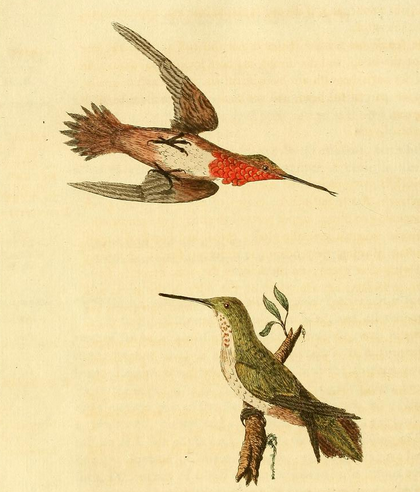The Rufous Hummingbird was “discovered” for European science by the naturalists of the Cook Expedition aboard the Resolution. As we’ve already seen, the Englishmen didn’t actually come across the bird themselves, but rather first saw it when it was brought to them “in great numbers” by the native inhabitants of Canada’s Vancouver Island.
According to Thomas Pennant, who in his Arctic Zoology worked up many of the specimens that came back with Cook’s ships (and without Cook), some of those hummingbirds came to the crew of the Resolution still breathing:
The Indians brought them to our navigators alive, with a long hair fastened to one of their legs.
Just where Pennant came up with this piquant detail isn’t clear: it isn’t in the report of Cook’s voyage, and I don’t find it in Latham, either, whose General Synopsis provides the illustration at the top of this entry. But it’s a fine picture, isn’t it, little red birds buzzing around at the end of their tenuous tethers like flies in a bored high school classroom. Maybe it’s true, maybe it isn’t; but it’s worth pondering.


